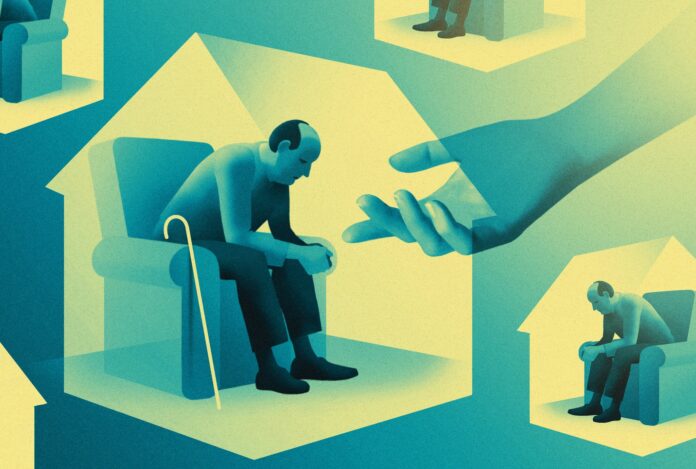When the coronavirus outbreak forced the YMCA to shutter last month, about 70 staff members quickly volunteered to make weekly calls to all 650 participants of their senior program. Ms. Lisa Carfagna, a marketing staffer for the 92nd Street Y in Manhattan, regularly checks in with 25. Like many cultural organizations, the Y has turned to digital technology — streamed concerts and lectures, classes on Zoom, discussion groups via conference call — to keep its older patrons engaged. But computers and smartphones can feel daunting; about a third of Americans over 65 told Pew Research they weren’t confident about using digital technology. About half said they needed help in setting up new devices. Some seniors lack broadband connection.
Social isolation and loneliness among older adults have become such a concern that two years ago, the National Academies of Sciences, Engineering and Medicine assembled an expert committee to analyze research findings and make recommendations. Its report arrived in late February — as the coronavirus spread. Now, older people have been sternly warned to adopt the very practices that, the committee found, can endanger their health.
By itself, aging doesn’t create social isolation or loneliness. But it raises the risks. “Many older people, especially women over 75, are living by themselves because their spouses died,” said Dr. Dan Blazer, the committee chair and a psychiatrist at the Duke University School of Medicine. About a quarter of people over 65 living independently in their communities are considered socially isolated, and 43 percent of those over 60 report feeling lonely — and that was before public health officials instructed older people, and everyone else, to stay home.
When the committee looked for promising solutions, it found studies showing that attending exercise programs helped reduce isolation — not a useful approach at the moment. The evidence for much-heralded technological approaches, from robotic pets and Zoom to voice-activated assistants, remains thin thus far.
In Southern California, two PACE programs — federally funded efforts to provide full medical and social services for those aging in place — have leased tablets called GrandPads for their roughly 250 participants. Designed for those over 75, the devices allow seniors to call the PACE center, receive and reply to email, and receive video calls from PACE staff members (and play games).
In Los Angeles, the Motion Picture and Television Fund has fielded a groundswell of new volunteers for its Daily Call Sheet program, which matches them with older people who share their entertainment industry backgrounds.
Drivers delivering Meals on Wheels to Dr. Blazer’s 96-year-old mother-in-law, instead of just dropping off food as usual, now tap on her door and chat from across the hallway of her independent living building. “They have a conversation from six feet away,” he said. “She says it makes a huge difference.”
Peg Rosen, a freelance writer in suburban New Jersey, has begun FaceTiming with her mother-in-law in Manhattan every morning. They work the New York Times crossword puzzle together, just as they used to on Sundays in a city coffee shop, a pleasure now forbidden them. “It’s delightful, a highlight of my day,” Ms. Rosen reported. “I think we’ll continue when this all ends.”
Analysis
This article is about the struggles caretakers, family members, and leaders of organizations benefiting older adults face in terms of connecting with their aging friends and family while still maintaining safe social distancing recommendations. It was extremely relevant last year and in the early months of this year when vaccines were not yet being administered, but I imagine it will become relevant once again in the coming months with the spread of these new, highly contagious strains of coronavirus. The article explains some of the problems with digital solutions to combating social isolation in this context, as well as describes some other approaches to connecting with older adults that are being implemented around the country. After months of physical distancing, virtually everyone is craving human connection that is not relegated to the confines of a screen. I think this article really highlights the need for solutions that combat social isolation in an “analog” yet safe way.




